Table of contents
Who is the orixá Iansã?
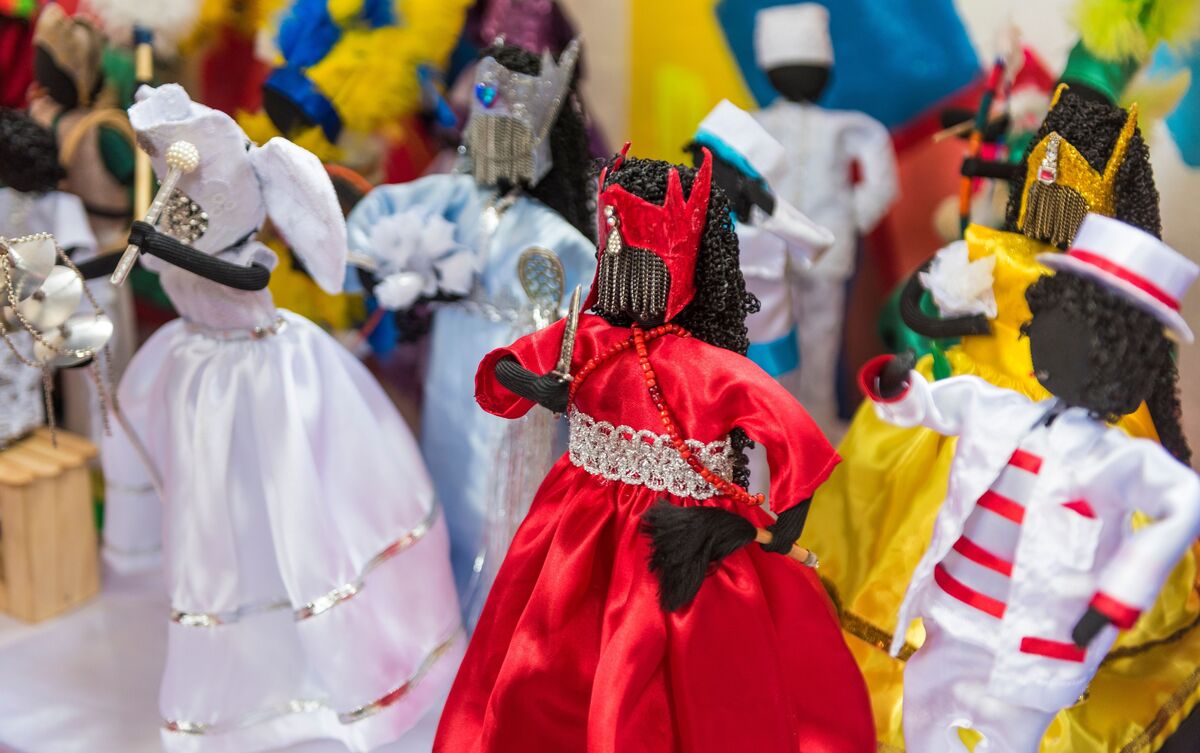
The orixá Iansã is a deity whose main characteristic is the dominion of the forces of nature, representing the energy of fire and air, moving the winds and bringing the storms. Thus, it brings the idea of intensity through the movement of the Earth's energy.
Iansã is a warrior orixá, associated with war and battles in the stories that originate African religions. Iansã also has a very present message of passion, using the intensity of love to achieve her conquests. Finally, she is also in charge of communication with the dead.
In mythology, she is an orixá who represents strength and brings courage, attitude, passion, truth and struggle to those who place their faith in her. She also has her dark side, like all orixás, capable of bringing devastation by the lack of balance of her vanity and will to win. In this article, you will know much more about this orixá. Check it out!
The story of Iansã, or Oyá
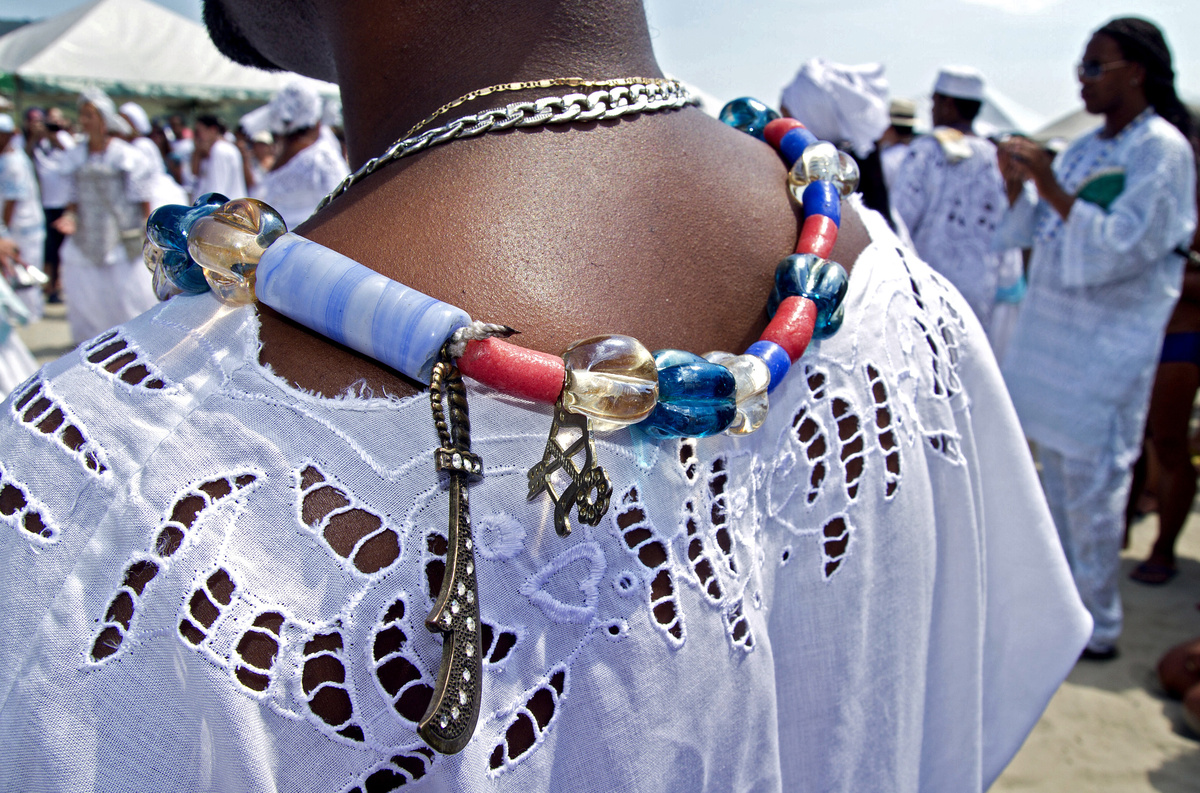
The name Iansã is a nickname that Xangô, her husband, would have given to Oyá, her original name, which means "The mother of the pink sky", because she would be as beautiful as the sunset.
Thus, Iansã and Xangô would be husband and wife in African mythology, being greeted whenever a storm begins. She is asked to calm the winds, and he is asked to calm the rains. It is said that Xangô's fire does not exist without Iansã.
In other aspects, Iansã also dominates the forces of death, being called Queen of the Eguns. Eguns are all the spirits of death. Besides that, she is the lady of the winds and the forces of nature, bringing the energy of the earth through climatic phenomena. To know more about this orixá, keep reading!
The origin of Iansã
Iansã has her origin in Nigeria, on the banks of the Niger River, and her cult was brought to Brazil by slaves. African mythology tells that Iansã, or Oyá, as she is originally called, walked through many kingdoms in search of knowledge. Because of her strong connection with carnal passion and love, she became involved with many kings, among them Exu, Ogum, Logun-Edé and, finally, Xangô.
For every kingdom she walked and with each of her loves, she learned powers and knowledge that led her to be a great warrior, queen of the forces of nature, of the realm of the dead and of love. Iansã brings the virtues of the warrior woman, who does not submit and who awakens true love.
Queen of lightning
Among the great and intense powers of Iansã, the one that reveals itself as the greatest representative of her visible strength to men is the mastery of the forces of nature. She is able to control lightning in storms, using this as a fighting instrument and a demonstration of power.
The orixá of storms is related to the force of electricity, bringing all the power of this energy, which is creative and destructive at the same time. For this reason, her children and devotees of religion in general ask the orixá with faith to protect their homes, boats and their families from the evils of the rains. Rain, like Iansã, is synonymous with prosperity or destruction - life and death.
The free warrior
Iansã is called the free warrior, because, although she has been involved in love countless times, according to mythology, she always goes out in search of a new love and does not refrain from her battles to remain in the same kingdom.
Iansã is seen at various times as the free warrior, who is willing to face whatever she has and go out on a new adventure or relationship if that feels right in her destiny.
Companion of Ogum
In African allegories, Iansã would be Ogum's companion in the making of weapons for battles. The story tells that Oxalá makes a request to Ogum, which the latter could not fulfill. Iansã, then, is ready to help, blowing the fire for the making of weapons in hot iron.
Iansã is also Ogum's wife in one part of the story, in that she would have created Logun Edé, son of Oxum. However, she runs away with Xangô and becomes his first wife.
Iansã and Logun Edé
In African mythology, it was Iansã, together with Ogum, who created Logun Edé. Logun Edé would have been the son of Oxum, orixá of sweet waters, who would have been lost in the waters by the fury of Obá, third wife of Xangô.
Because of these power disputes, Iansã and Ogum would have assumed Logun-Edé's guardianship until he met his mother as an adult. There are also mentions that Iansã would have had a relationship with Logum-Edé at another time, when she learned the arts of hunting and fishing from him.
His love for Xangô
The orixá Iansã is marked by having lived many passions, through which she acquires knowledge, to become a strong and wise warrior.
After a relationship with Exu, Oxóssi and Ogum, Iansã goes in search of Xangô, to live off her vanity and the wealth of her kingdom. However, it is in Xangô that Iansã finds true love and surrenders herself deeply, just as he teaches Iansã the powers of thunder and gives her his heart.
Rivalry and Oxum
Xangô would have had three wives: Yansã, Oxum and Obá. Yansã was the first wife, who Xangô would have loved the most, giving his heart. Yansã was the most special of all, beautiful and jealous. Oxum was the second wife, being coquettish and vain.
Oxum was unpleasant with the others and, in general, appears as sensual and irresponsible. For this reason, she had a rivalry with Yansã, who was the most special to Xangô and who had raised his son for a time, Logun-Edé.
The Lady of the Eguns
In African mythology, the Eguns are the dead and Iansã is the lady of death, also having power over this realm.
Thus, she communicates and takes care of the Kingdom of the Dead, being the Lady of the Eguns. According to the legend, she would have filled her house with Eguns, to prevent Xangô, her husband, from leaving her. The power over death would have come from a gourd that Obaluaiê would have sent to Xangô and that she broke without authorization.
Iansã in Umbanda
Umbanda is a religion of Brazilian origin, which began in 1908, from the religious syncretism between religions of African matrix, Catholicism and Kardecist Spiritism. In Umbanda, therefore, there is direct contact with entities and spirits through mediumship.
Thus, in Umbanda, the contact with the Orixá is much more direct and there is the possibility of making works and offerings to Iansã. Moreover, by the syncretism, there is the figure of Santa Bárbara as representative of Iansã, to whom is also deposited the faith with the same intention of the orixá.
Thus, in Umbanda, Iansã protects her devotees from spiritual attacks, so that the energy remains high and there are no losses in physical, mental or spiritual aspects.
Iansã in Candomblé
Candomblé is a religion of African origin, brought to Brazil by enslaved black people. In it, there is no incorporation of entities or spirits, since the orixás are only the representatives of a greater God, who governs the world and the forces of nature.
Thus, in Candomblé, Iansã is the orixá of the forces of nature and, therefore, to whom the devotees turn to ask for peace through nature, prosperity through the rains and other benefits associated with her powers. The children of Iansã, that is, those who understand they have the orixá as a guide, recognize her qualities in themselves.
The syncretism of Iansã
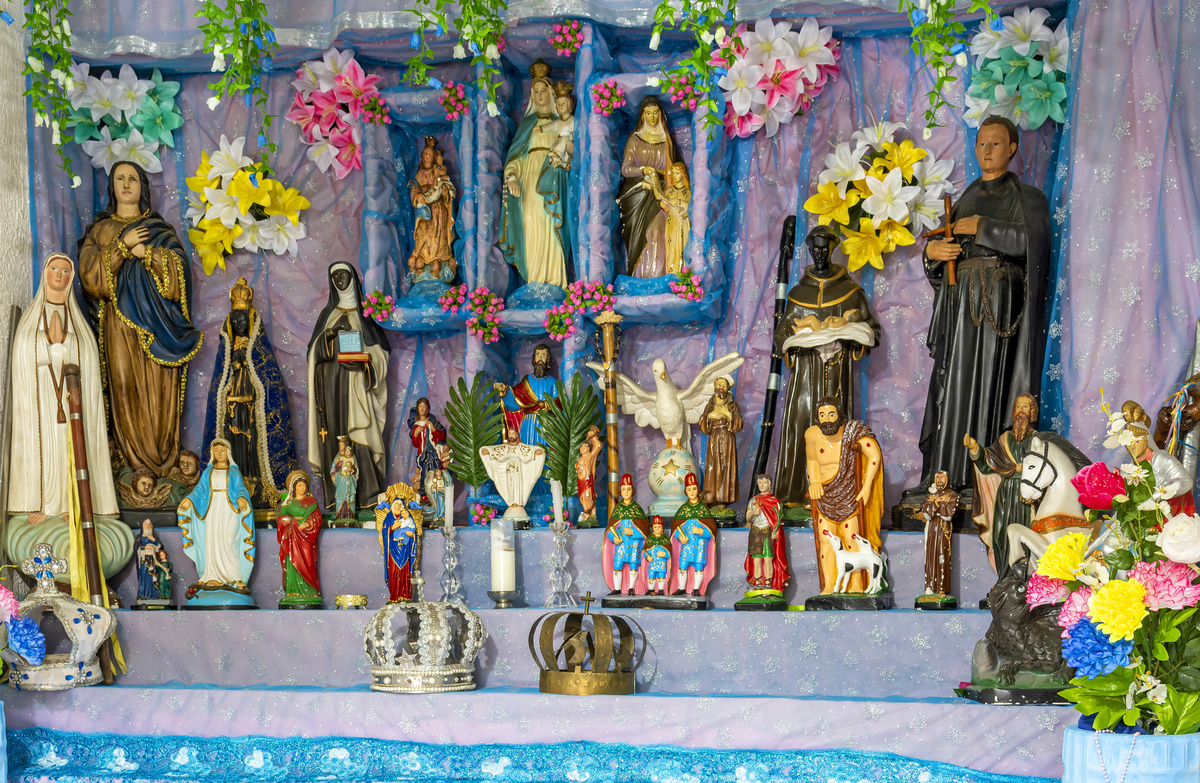
The Brazilian religious syncretism, in fact, comes from Umbanda, religion that was born in Brazil in 1908, from the union of the foundations of African religions, Catholicism and Kardecist Spiritualism. For this reason, the syncretism brings the religious equivalence of the figure Iansã in Santa Barbara and her day is celebrated with much enthusiasm throughout Brazil.
Besides Santa Bárbara, the main syncretized figure, Iansã is also recognized in other equally important figures. The idea of the warrior woman, the force of knowledge and love, and the relationship with the occult forces of the world of the dead make her extremely versatile and potent in the religious imaginary.
Furthermore, it is possible to observe syncretism not only in religion, but also in relation to ancient mythologies in general, such as Norse and Hindu. Even comic books that feature gods constitute a form of syncretism.
Below we will show you some of the main syncretic figures of Iansã, from Santa Barbara, the most common in Umbanda and to which many followers are devoted, to Ororo, a cartoon character who has the same fantastic qualities as Iansã. Check it out!
Santa Barbara
In the Catholic Church, Iansã corresponds to Santa Bárbara. She is the Catholic saint who would have died, after converting to Christianity, murdered by her own father. After her death, however, a bolt of lightning fell on the head of Bárbara's father, as a form of divine compensation for his unjust act, which ended the life of the one who would become a saint.
Because of the appearance of lightning in her story, as well as the sword that Santa Barbara usually possesses, she is related to Iansã in the Afro culture, who also carries a sword in her hand. Both bring the same elements: the forces of nature and the warrior heart.
Santa Teresa
Because of religious syncretism, it is possible to find Iansã as Saint Teresa. This is a Catholic saint that, however, appears more strongly in the Cuban Santeria, a religion that is the result of the union of the Yoruba religion, Christianity and the religions of indigenous peoples of the Americas.
Saint Teresa was a Catholic saint from Renaissance Europe, known as the Mother of Spirituality, for having contributed to Christian mysticism and Catholic spirituality. She is closely associated with Yansã, for bringing the message of Queen of life and death, for her knowledge and control over the supernatural world and therefore over the dead.
Our Lady of Candlemas
Regarding Our Lady of Candelaria, in the religious syncretism of the Catholic Church with African religion, Iansã is associated with her by the Cuban Santeria, which also mixes elements of the indigenous religions of the Americas.
In Brazil, Our Lady of Candelaria is associated with the orixá Oxum. In any case, it is the Saint that would have appeared in Spain and that brings healing to the blind, being, therefore, Our Lady of Light. She is, ultimately, the Virgin Mary, mother of God.
Our Lady of Annunciation
Our Lady of the Annunciation is, in the Catholic Church, the saint that makes reference to the greatest act of faith ever recorded, which is the Virgin Mary's yes to the angel Gabriel, after he came to announce that she would be the mother of the son of God.
In religious syncretism, Iansã is also associated with this saint as the powerful mother. In this case, however, she is much more in the Santeria Cubana, which involves religions of the indigenous peoples of the Americas, in addition to the Catholic Church and African religions.
Our Lady of the Snows
The syncretism of Iansã with Our Lady of the Snows, in truth, has its origin in the association of Iansã with Euá, who, in Africa, is an independent orixá. It is also possible to find the syncretism of Our Lady of the Snows with Obá, orixá of knowledge and purity.
Euá would be daughter of Oxalá with Iemanjá and is a chaste figure, who penetrates the knowledge of divination and has the power to become invisible, while Obá absorbs illusion and leads to the path of peace through knowledge. Our Lady of the Snows, in turn, is the allusion to the Virgin Mary of Catholicism, who made it snow in Rome in the fourteenth century, after a devotee had a dream about her.
In synthesis, this syncretism brings the idea of purity and peace through reason and divine truth, which does not bear illusions. Iansã, for being a warrior woman and free through knowledge, also carries these virtues.
Taranis in Celtic Mythology
Taranis was the god of storms, hurricanes and the forces of nature in Celtic mythology, just like Iansã in African mythology.
In this case, the idea of the counterposition of the effects of forces, destruction and life, both coming from the same origin, the waters, is very present. This is the representation of the divinity behind climatic phenomena, observed by man since ancient times.
Ran in Norse mythology
In Norse mythology, the goddess Ran was the most powerful of the seas and was very present in the imaginary of sailors, because it was she who could ensure a smooth journey. She was considered the goddess of death and, therefore, can be associated with Iansã by syncretism.
Norse mythology is also greatly influenced by the gods in command of the forces of nature. In this sense, the goddess Ran was the warrior goddess, conqueror, who had the power over the storm and, therefore, was the one to whom one turned to ask for peace of the waters and winds.
Rudra and Indra in Hinduism
In the Vedas, the predominant religion in India, Indra is the god of storms, rains, wars and rivers. He is a great god, one of the most remembered in mythology, for his powers are enormous in the search for happiness and prosperity. He has control over the forces of nature and acts to care for human beings, being much venerated.
Rudra is the Hindu religion's designation for the son of Brahma, the supreme god. It was also a generic way of referring to the gallery of demigods. Iansã is syncretized with both divinities, since, like Indra, she is goddess of the winds and storms, as well as a warrior; like Rudra, she is in the category of the main orixás, being one of the foundations of the religion.
Ororo (or Storm) in the comics
The figure of Yansã as mistress of the forces of nature is portrayed in the comics by the figure of Ororo, or Storm, in the X-Men comic book series.
Like Iansã, the Storm has the power to manipulate the weather and the forces of the winds and rains in her battles. The idea being essentially the same as Iansã's performance in African Mythology, there is a kind of syncretism here.
In fact, the forces of nature are depicted in almost every form of religious expression or arts and entertainment.
The qualities of Iansã
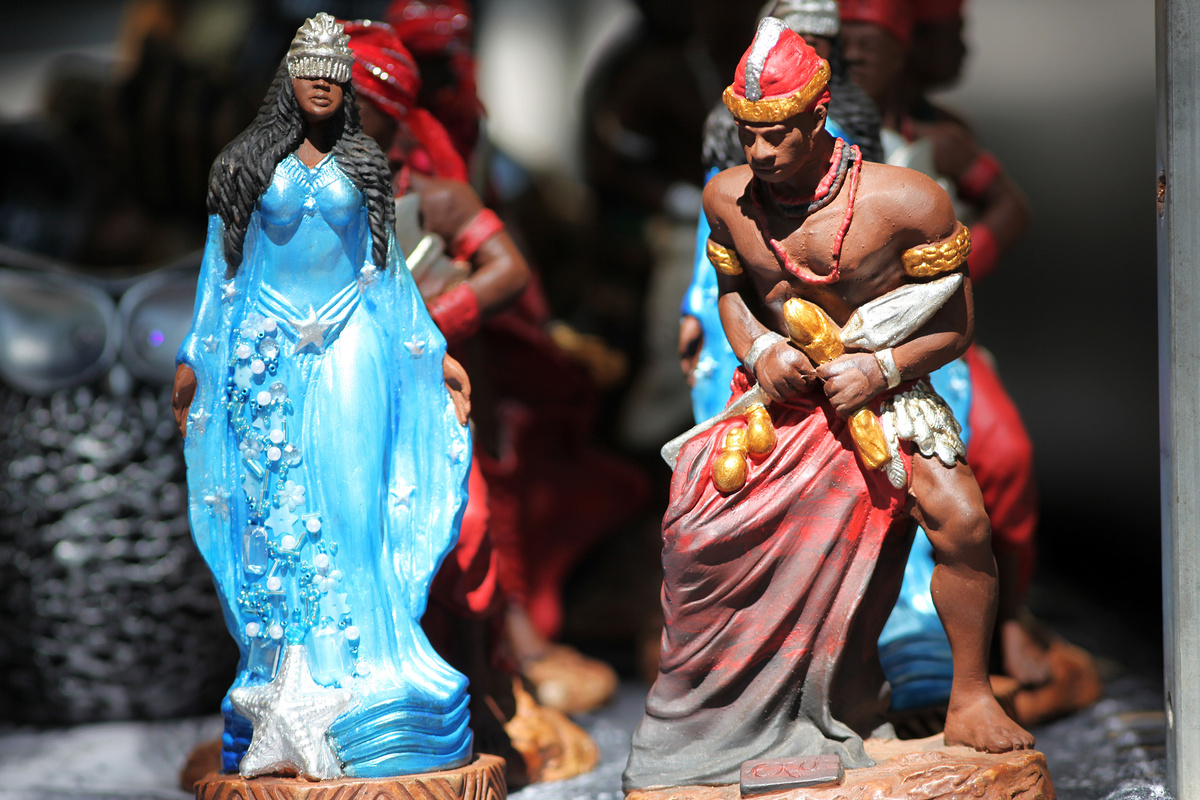
The qualities of an Orixá comprise the forms it can take. In fact, the qualities refer to the figure of the Falangeiro. The Falangeiros are below the Orixás and command the infinity of spirits and entities that are guided by them, being, sometimes, by more than one at the same time.
In addition, the same orixá has multiple powers, associated with one of its facets. For this reason, the qualities are like equations of powers that manifest themselves.
Thus, in the case of Iansã, in each of the moments that she appears under a form or emanating a power, be it of the winds, death, or passion, these possess a specific name. This would be the quality related to the Falangeiro.
Below you will see the main qualities of Iansã, such as Afefe, which refers to the winds and appears in red, white and coral colors, or Gunán/Ginan, which is the reference when Iansã reveals herself together with Xangô. It is important to know her qualities to better understand her figure!
Abomi/Bomin
Abomi/Bomin is said when Iansã appears associated with Oxum and Xangô. The stories of the orixás intersect in several ways and, when there is this triple association - Iansã, Oxum and Xangô - there is the quality Abomi/Bomin.
Iansã and Oxum were two of the three wives of Xangô, god of war. Thus, in Abomi/Bomim, there is the prevalence of the connection through love, combined with strength, sensuality, family and victory, inherent to all these orixás.
Afefe
Afefe refers to the winds of which Iansã is queen. The quality Afefe refers to this relationship and occurs when the female orixá takes possession of her powers of the winds and the storms that accompany her.
In these situations, he uses the colors white, red and coral. The colors vary, according to the situation in which they are presented.
Akaran/Tiodô/Leié/Oniacará
Akaran refers to fire, which is also Iansã's companion. In rituals, Iansã swallows fire and represents Akaran/Tiodo/Leié/Oniacará.
Akaran is also Iansã's cookie, which is distributed in rituals and that, by eating it, there is a kind of reverence to the orixá. This practice disseminated the acarajé as a very strong culture among the descendants of African culture, which comes from Arakaran + ajé.
The cookie is today one of the greatest gastronomic expressions of African culture in Brazil and is made in all regions of the country, especially in Bahia, where the black population that worships these religions is the largest in the country and the world outside Africa.
Arira
Arira is another form of Yansã, more specifically when associated with other orixás in different forms as well, such as Bará-Angelu, Bará Adaqui, Bara Lanã, Xangô Aganju, Xapanã or Ogum Onira.
Bará is the orixá of the paths, of communication between the Earth and the Divine. He is often associated with the idea of the devil, but is no more than the one who brings the necessary movement, which sometimes turns out to be sacrifice, because of bad intentions. Xangô, Xapanã and Ogum, in turn, have in common the fact that they are great warriors.
Arira is thus the feature of Yansã associated with the most terrible wars, in which what needs to be done is done, in order for the necessary movement to happen.
Bagan
Bagan is the form in which Iansã presents herself when she eats with Exu, Ogum and Oxóssi. These three orixás have in common the masculine force of the struggle for nature, bringing about transformations.
In Bagan, there is also very strongly the relationship with the Eguns, the spirits of death that dominate the Earth and that are controlled by Iansã. In this union, therefore, there is the presence of the forces of death, with the struggle for life and the need for transformations.
Bagbure
Bagbure is from the cult of Eguns. These refer to the power of union with death that Iansã possesses. The queen of the Eguns uses her strength to manipulate them and exert influence with the fear of death.
For this reason, Iansã is very feared and even the story goes that her love, Xangô, was not fond of Eguns. Although the proximity to the world of the dead can be frightening for many people, in fact, it is nothing more than a present and necessary energy for life, with which Iansã works beautifully.
Bamila
In the circumstance where Iansã appears as Bamila, there is Eró with Oxalufan. Eró is a kind of secret, of fusion. Much more than an influence or a partnership, Eró is a kind of essence created from the energetic forces of two orixás.
In turn, Oxalufam is the orixá of good, of light, of silence and of peace. It is the tranquility after the storm, which brings welcome to the being, after overcoming a storm on the way to evolution. Bamila is, therefore, a stage of strength and unconditional love, having a very positive and pacifying charge.
Biniká/Benika
Biniká/Benika refers to the way that the communion of Iansã with Oxum Opará is presented. The two orixás are commonly found in conflict, because they have supposedly opposite and competing energies. Iansã for strength, loyalty, beauty and welcome, and Oxum for sensuality, enchantment and femininity.
However, in Biniká/Benika, the two forces combine, bringing the energy of beauty and sensuality of Oxum, combined with the warrior spirit of Yansã. This is an extremely feminine quality, but with a strong aspect, far from the stereotypes of the fragile woman.
Euá
Euá, mainly in Africa, is an orixá, by itself. However, in the strands of African religions brought to Brazil, it is a form of Iansã found in some Iles.
Euá is a form that brings the feminine energy of purity, wisdom and tranquility. It is about adaptable women, but who only surrender to true love when they are truly in love. In syncretism, it is associated with Our Lady of the Snows, precisely for purity and welcoming feminine love.
Filiaba
Under the Filiaba characteristic, Iansã has a foundation with Omolu. This means that the latent qualities of the orixás combine, to guide the entities towards the energy resulting from this equation.
Omolu is the Orixá that carries the energies of healing and illness. For this reason, he is very feared and his works must be very well executed and directed, because it directly affects the physical health of the person. Combined with Iansã, it can be an influence of strong healing power or unveiling of diseases.
Gunán/Gigan
The Gunán/Ginan quality occurs when there is a communion of Iansã with Xangô. In mythology, the orixás were once companions, this being Iansã's great love among all those with whom she related.
The union of Iansã and Xangô is the most celebrated for the devotees of this orixá, because both have in themselves the forces of nature, controlling the storms, the lightning and the winds. The affective relationship of mythology unites these energies by true love, the strongest connection that can exist between two beings.
Gunán/Ginán is, therefore, one of the most present characteristics of Iansã, and there are joint offerings to these two orixás on rainy days.
Kedimolu
Kedimolu is about Eró Oxumare and Omolu. Eró, in African grammar, means something like secret, but a little deeper. It's about the mysticism behind this symbolism - in this case, between Iansã, Oxumaré, the orixá of movement, and Omolu, the orixá of healing and sickness.
For this reason, the combination existing in Kedimolu is very impacting in the lives of communities and individuals in need of healing. Iansã brings the warrior force of achievement, Oxumaré brings the dissolution of cycles and Omolu the healing or illnesses, this being quite delicate, as it involves the physical health of people.
Kodun
In Kodun, there is the Eró of Iansã and Oxaguiã. Oxaguiã is a warrior orixá, often confused with Ogun. He carries the message of strength, purity, victory, the positive and masculine. The Eró comprises a kind of secret, almost like an essence among the orixás.
Thus, in Kodun, the aspect of Yansã that stands out is that of strength over the energies of nature, which, in combination with Oxaguiã, is very favorable to the spirits with a brave heart, who connect with nature.
Luo
The Luo quality comes from Eró with Ossaim. Eró is the secret, the fusion between the orixás. Ossaim is the orixá of Nago origin that lives in the forests and feeds off the sap of the trees. He is the orixá of healing through nature, of pharmacists, of those who like hard work. He is also very intelligent, upright and discreet.
In Luo, there is a magical and mystical beauty of the combination of Iansã, Queen of the Winds, and Ossaim, free-spirited and attentive to the teachings of the jungle. It brings an extremely positive energy of purification and truth for life.
Maganbelle/Agangbele
Maganbelle is the quality of Iansã that comes associated with the impossibility of having children for couples. Thus, it brings the image of the orixás Iroko, orixá of time, and Xangô, orixá of lightning and justice, besides being Iansã's love.
The combination thus primarily carries the idea of unconditional love, of healing by time, and of fulfilling the demands of life by pain and trial, for the divine permission of that which is desired.
Messan/Yamesan
In the Messan form, Iansã was married to the orixá Oxóssi, in African mythology. Oxóssi is the orixá of the forests and of knowledge. In the Messan form, Iansã is half woman, half animal. This is the form of the mother of the nine children of Iansã, the so-called Oyá children.
The nine sons of Iansã would be the representation of her characteristics, being them: the winds, vanity, rebellion, determination, ability to concentrate, observation, reasoning, agility, revenge, devastation and the warrior side.
There are studies that the fathers of the sons could also be Ogum or Xangô, but the sons are essentially attributed to Iansã.
Obá
Obá is identified as an orixá in her own right in the original African culture. She was one of the wives of Xangô and is said to have cut off her ears by Oxum.
In Brazilian culture, she can be identified as one of the faces of Yansã, precisely because she was the wife of Xangô and also because she brings justice. Obá, however, is the orixá of sweet waters and seeks balance, being, by these characteristics, different from Yansã, who is Queen of the Winds and can bring devastation by her energy.
Odo
Odo is a quality of Iansã that is linked to her great capacity to love. In truth, it is more about carnal love than unconditional love. This is because, although the force of the winds is Iansã's most energetic characteristic, it is through love that she walks in search of her conquests. Here, her connection with fire and passion is revealed.
Odo is related to the waters, precisely because it brings the aspect of emotion in Iansã. Although this is not as exalted as her masculine warrior and unbeatable side, it is latent and extremely necessary to form the goddess that she is, the one who awakened love in so many warriors.
Ogaraju
Ogaraju is one of the oldest qualities of Iansã in Brazil, because the religions of African origin, such as Candomblé and Umbanda, were brought by slaves after Portuguese colonization and have been present in Brazil since the "discovery" in 1500.
Thus, due to the large amount of African blacks brought to the country, Brazil is today one of the countries in the world outside of Africa where the culture remains very much alive. Thus, Ogaraju, of African origin, is already a myth in Brazil because of this history.
Onira
Onira is initially an independent orixá, which, in Brazil, is confused with Iansã. This is because both are warriors and have a connection with the world of the dead.
Onira is a very feared orixá, especially in Africa, because she has a connection with the world of the dead and is associated with orixás who work with this energy in a dense way, such as Oxaguiã, Ogum and Obaluaiê.
Onisoni
Onisoni is the quality of Iansã which is based on the orixá Omulu. Omulu is the orixá of healing and sickness. Thus, he has the power to drive away sickness.
In Onisoni, it is possible to observe the influence of the powers of the two orixás. Iansã is a very powerful orixá, who pushes intentions in many directions. In this case, the idea of healing comes very present with the force of struggle and emotions of Iansã.
Petu
The Petu quality is directly linked to Xangô, orixá of which Iansã is wife. In this form, it always precedes Xangô, almost getting confused with him. Iansã and Xangô are married in African mythology and both have the forces of nature as their main power.
The story goes that it was he who gave the knowledge of the powers of lightning and storms to Iansã. In this capacity, they merge through their common powers and the strength of true and unconditional love.
Semi
Iansã is the most feared orixá of all, since she represents the Earth and, therefore, death.
Because he has dominion over everything on Earth, he is also above life and death. Nothing is hidden from him. Because Iansã is the orixá of death, with dominion over the Eguns, the union of these two orixás is very powerful over the issues of existence.
Sine (or Sine)
In Seno, or Ceno, Iansã is based on Oxumaré. Oxumaré is the orixá of cycles, of endings and new beginnings. It is said that he transits the earth like a rainbow, that he does not respect the limits of time and that he reappears when necessary.
In this quality, Iansã and Oxumaré bring the beauty of life through renewal. Iansã, queen of Death, comes intense with the idea of the end and Oxumaré comes with the beauty of new life.
Sinsirá
In Sinsirá, the orixá Iansã has a foundation with Obaluaiê. Iansã and Obaluaiê have a strong connection, due to the knowledge of the forces of death and, therefore, the great truth of life. Their appearances together are quite striking and sometimes bring dense energies.
Sire
In the quality Sire, Iansã appears with foundations in Ossaim and Ayra. Ossaim is the orixá of the forests, being hardworking, discreet, and representing wisdom and healing through nature. He is also called Ossanha, very known by this name in song lyrics.
Ayrá is an orixá who, in Brazil, is often confused with Xangô. His powers and fighting characteristics are very similar to Xangô. He is also considered a warrior orixá, who dominates the force of lightning.
Yapopo
Yapopo is a characteristic of Iansã that appears in the same vibration, or foundation, of Obaluaiê. This is the most feared orixá of all, who holds the power over the world of the dead and who, in this facet, is identified with Iansã, queen of the Eguns.
There is more than one quality in which Iansã and Obaluaiê identify themselves and this occurs because Obaluaiê is directly linked to the world of the dead, having this as his strongest characteristic. Iansã plays, therefore, a role of queen of a world that has several kings, in various instances.
Topo (or Yatopo, or Tupé)
In Topo, or Yatopo, or Tupé, Iansã has a foundation with Ogum and Exu, and a connection with Xangô. Ogum is the warrior orixá, who makes weapons for battles and brings the message of truth and vitality. Exu, in turn, is the messenger orixá, who makes all and any communication between the Earth and the Divine.
Exu is often seen as a bad figure, representing death from one point of view. But this is because nothing passes between the Earth and the Divine without passing through the death of the Earth. Xangô is the warrior orixá, love of Iansã and holder of the forces of lightning.
Gbale (or Igbalé, or Balé)
It is through Gbale that we find Iansã, queen of the dead. In Gbale, all the characteristics of Iansã's dominion over the dead are latent. It is here that she reveals herself as queen of the Eguns, the spirits of death, having dominion over them.
This facet of Iansã, however, is curiously not her main one. She also has present the force of nature and latent passion. For this reason, she is the holder of many powers essential to life, and in the qualities in which she reveals dominion over death, it is when one can observe only this facet highlighted.
Characteristics of Iansã's sons and daughters
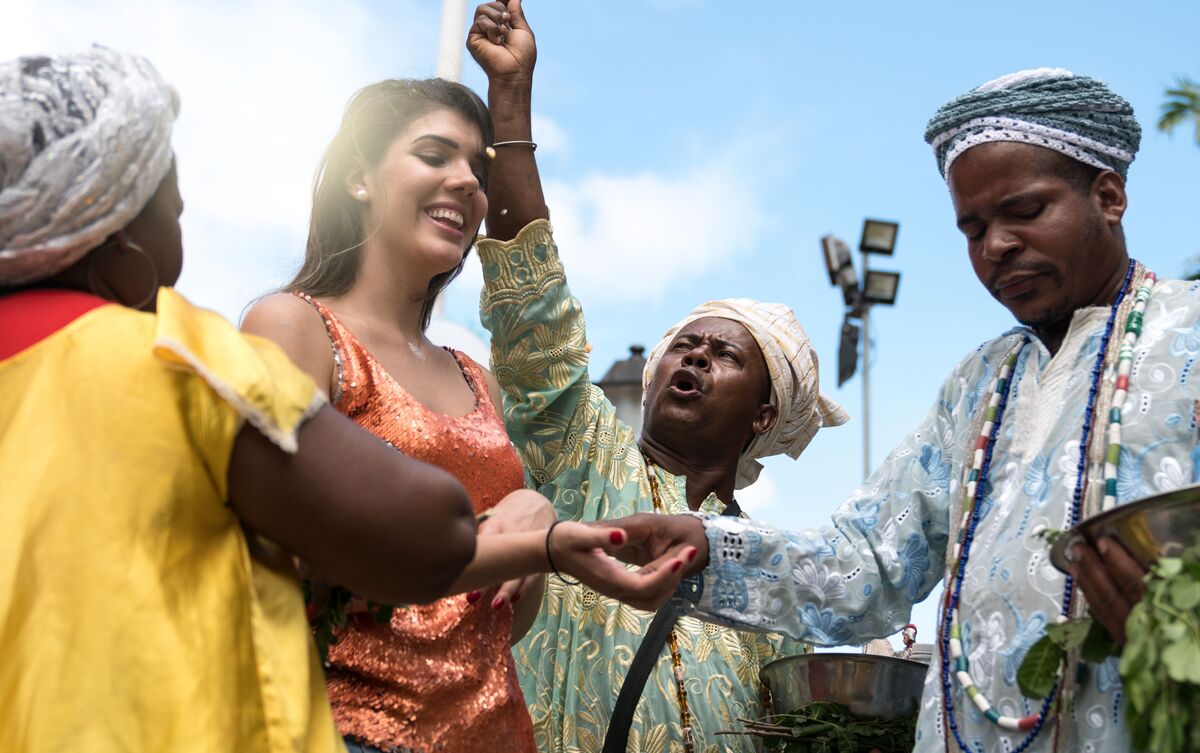
The characteristics of the orixás can be identified in their children of faith on Earth. This is because, when invoking the protection of an orixá, he pours over human beings his energies, which relate to their powers and aspects. Thus, Iansã brings the aspects of freedom and fervent passion, combined with hard work, justice and intensity of emotions.
In addition, since the orixás are human figures who make mistakes and sometimes give in to the sins and illusions of earthly life, they can easily be identified in their children. Below are the main characteristics that can be identified in the sons and daughters of Iansã, who is a very strong figure of benevolence and strength at the same time. Check it out!
Courage and freedom
Iansã is marked by being the female warrior orixá, with almost masculine aspects. For this reason, courage and freedom are characteristics very present in her and that are strongly revealed in her children.
Therefore, the sons and daughters of Yansã are courageous people who fight for justice with all their might and use their skills correctly to win battles. In addition, they cherish freedom as a form of triumph in life, yet they are faithful and loyal.
Strong and concise opinion
The sons and daughters of Yansã are energetic in all their facets and this is no different when they show themselves in their thoughts. Thus, the opinion of these people always reveal themselves with intensity and objectivity.
There are no half words, because the children of Yansã are precise in their speeches and express well what they think, with no room for misunderstandings or manipulations. They are also not very open to discussions and border on intolerance. They believe in their reasons and defend them to the end, even if they have to go over the heads of those who do not agree with them.
The worst enemies you can have
Children of Iansã are brave and fight for what they believe is right and just. For this reason, they believe in their truth and, if they meet an enemy, they can put all their energy into winning a dispute, even if they sometimes have to use dishonest mechanisms to do so.
So, with all the energy they have to fight for the good, the children of Yansã also have to fight against what they believe to be bad, and for this reason they are relentless with their enemies. They are not the kind of people who simply do not fight back. In fact, they are quite energetic and do whatever is necessary so that nothing gets in their way.
Storm in a glass of water
Because of the intensity of their lives, combined with passion and the need for attention, Iansã's sons and daughters usually make the so-called "storm in a glass of water".
It is common to identify a kind of drama in the attitudes of these people. There is a lot of self-love and, therefore, they believe they deserve everyone's attention when they feel harmed. It is even possible to identify a certain childishness in this aspect.
Compassion and care
Despite intense relationships, the sons and daughters of Yansã are loyal to their friends and love relationships and act with great compassion and affection. They are energetic people who nevertheless know how to value love and affection.
There is a lot of welcoming energy present in these people, who know how to be loving and give the warmth needed for the well-being of those they appreciate.
Active romantic life
Iansã's ability to arouse passions is also one of her powers. She uses them to acquire knowledge as she enters the lives of those who yield to her charms. Thus, Iansã's influence in a person's life brings about an active romantic life, ignited by many passions. Here, there is always the question of recognizing passion in contrast to true love.
To relate with Iansã
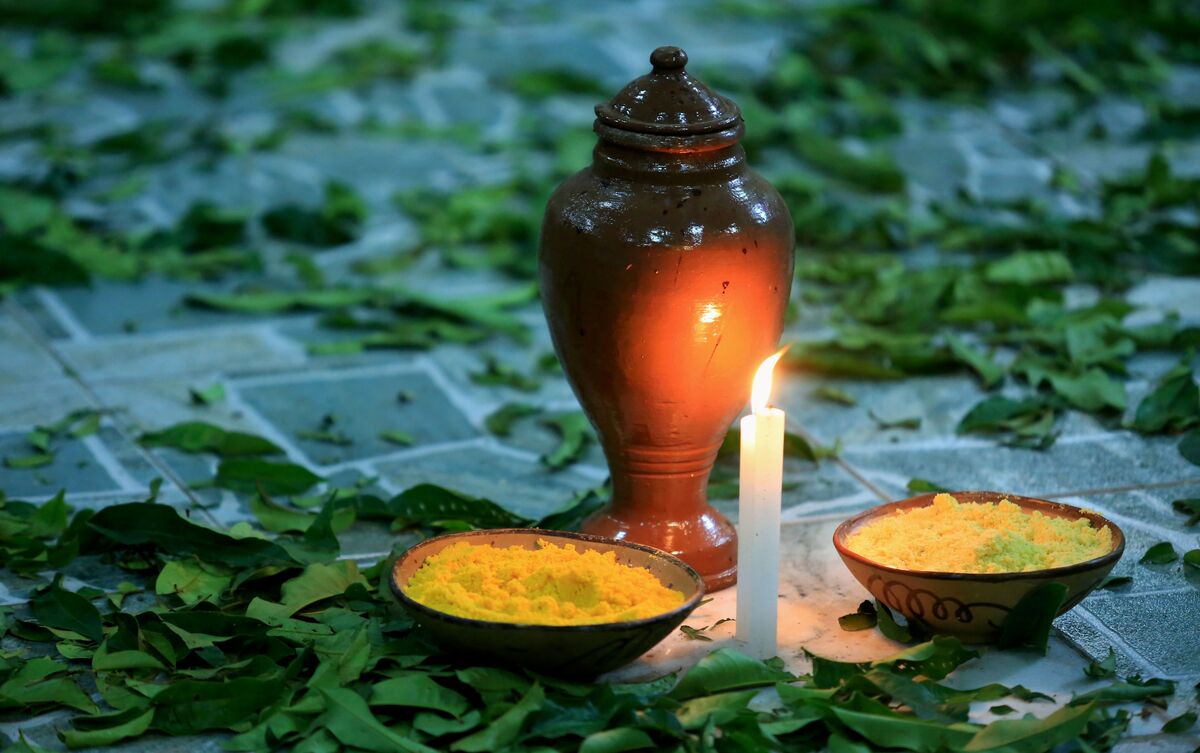
Becoming a child of an orixá means having its protection in times of distress. To maintain this bond, however, one must cultivate a relationship with the divine, which requires some attitudes of respect and appreciation.
In this way, celebrating the orixá on his day, offering gifts and getting to know his more specific aspects, such as his color, his elements or what kind of offering he likes is very important to establish a balance between his requests and what is offered.
Below, we have placed the main important elements to revere the presence and power of Iansã. Follow!
Day of the year of Yansã
Iansã's year falls on December 4. On this day, people take offerings in her name, such as candles, swords and yellow flowers, to salute the warrior orixá.
Day of the week for Iansã
The day of the week to revere the orixá Iansã is Saturday. However, as Iansã is often worshipped together with Xangô, her husband in African mythology, her day of the week may also be Wednesday for both.
Salutation to Iansã
The most common greeting to Iansã is Eparrêi Iansã, from the Yoruba language, which most influenced the religions of African matrix in Brazil.
Thus, when asking for blessings for Iansã, one begins the intentions with this greeting, which shows deep respect for the entity and which increases the connection with the divine plan and with the energies of the orixá.
Iansã Symbol
Iansã carries two symbols: The sword and the Eruexim, an instrument made of horse tail. The first, the sword, refers to the warrior aspect of Iansã, who is able to cut whatever is necessary, for good or evil.
The Eruexim, in turn, gives her control over the world of the living and the dead. With it, she scares away the Eguns, in the world of the dead, and controls the winds, in the world of the living.
Iansã Colors
It is very common to find references in the color red to Iansã. This is because, in Candomblé, she brings the colors brown, red and pink. However, Iansã's main color is yellow, indicated in Umbanda.
Element of Iansã
The main elements related to Yansã are fire and air. Yansã is the queen of the winds and therefore reveals through the air all the strength of her powers. Together with Xangô, she controls the storms and guarantees the safety or the fury, necessary for her devotees.
Iansã is a warrior, intriguer, mystic and brings all the effervescence, attitude and enthusiasm inherent to fire as an element.
Finally, by controlling the world of the dead and with the title Queen of the Eguns, it is possible to associate the earth element to Iansã. Earth is the limit between life and death and Iansã has transit in this aspect, being, many times, combined with other orixás messengers of death.
An offering to Iansã
Offerings to Iansã include yellow flowers and candles of the same color, which are her main color. It is also possible to offer the orixá swords, like those of St. George, but with yellow edges.
The acarajé, so famous and consumed mainly in Bahia, is the food of Iansã and, in many places, it is made a thank you to her, before eating it. In addition, they also make sweet drinks and fruits, especially yellow ones, like melon. The best place to deliver the offerings are in bamboo groves or quarries.
Prayer to Iansã
One of the possible prayers to Yansã, which summons her powers for protection, is as follows:
"O glorious Mother Warrior, mistress of storms, protect me and my family against evil spirits, so that they do not have the strength to hinder my journey and that they do not take possession of my light. Help me so that evil-intentioned people do not destroy my peace of mind.
Mother Iansã, cover me with your sacred mantle and carry with the strength of your winds everything that is no good far away. Help me in the union of my family, so that envy does not destroy the love that is in our hearts. Mother Iansã, in you I believe, I hope and I trust! May it be so and it will be so!
What does the orixá of the weather elements, Iansã, want to communicate?
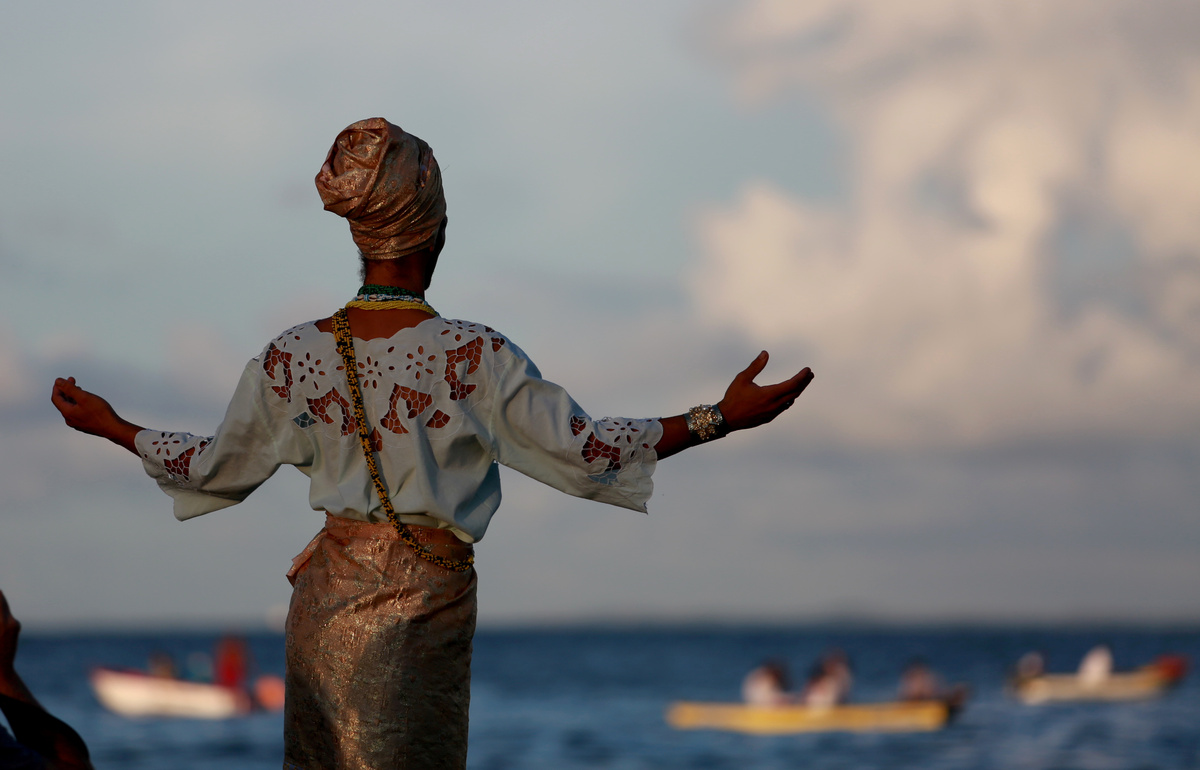
The orixá of the climatic elements, Iansã, carries with her the forces of nature, bringing lightning and wind in storms and demonstrating intensity and electricity. She also carries fire and is Queen of the Dead.
For these reasons, Iansã is the orixá of the climatic elements and one of the most powerful in African mythology. Her message is linked to the struggle for justice, freedom of thought, the importance of truth, the strength of love in all relationships and mortality as the limit of man's aspirations.
Iansã is the Queen Mother, being intelligent, responsible, welcoming and warrior. She is a very strong figure in Candomblé, which inspires her devotees, bringing mainly the idea of feminine strength, truth and reason. Nature is her ally in the governance of energies, bringing peace through war.

